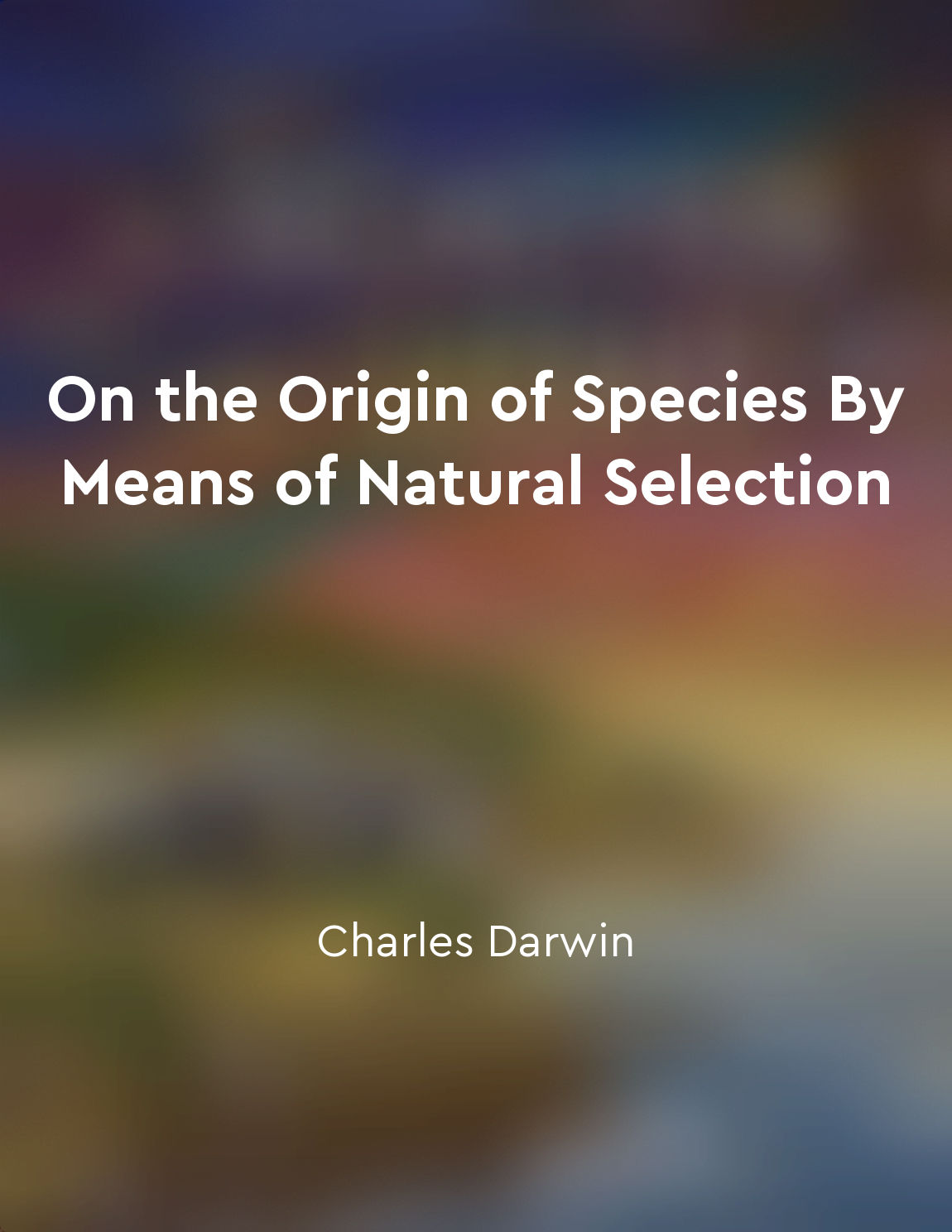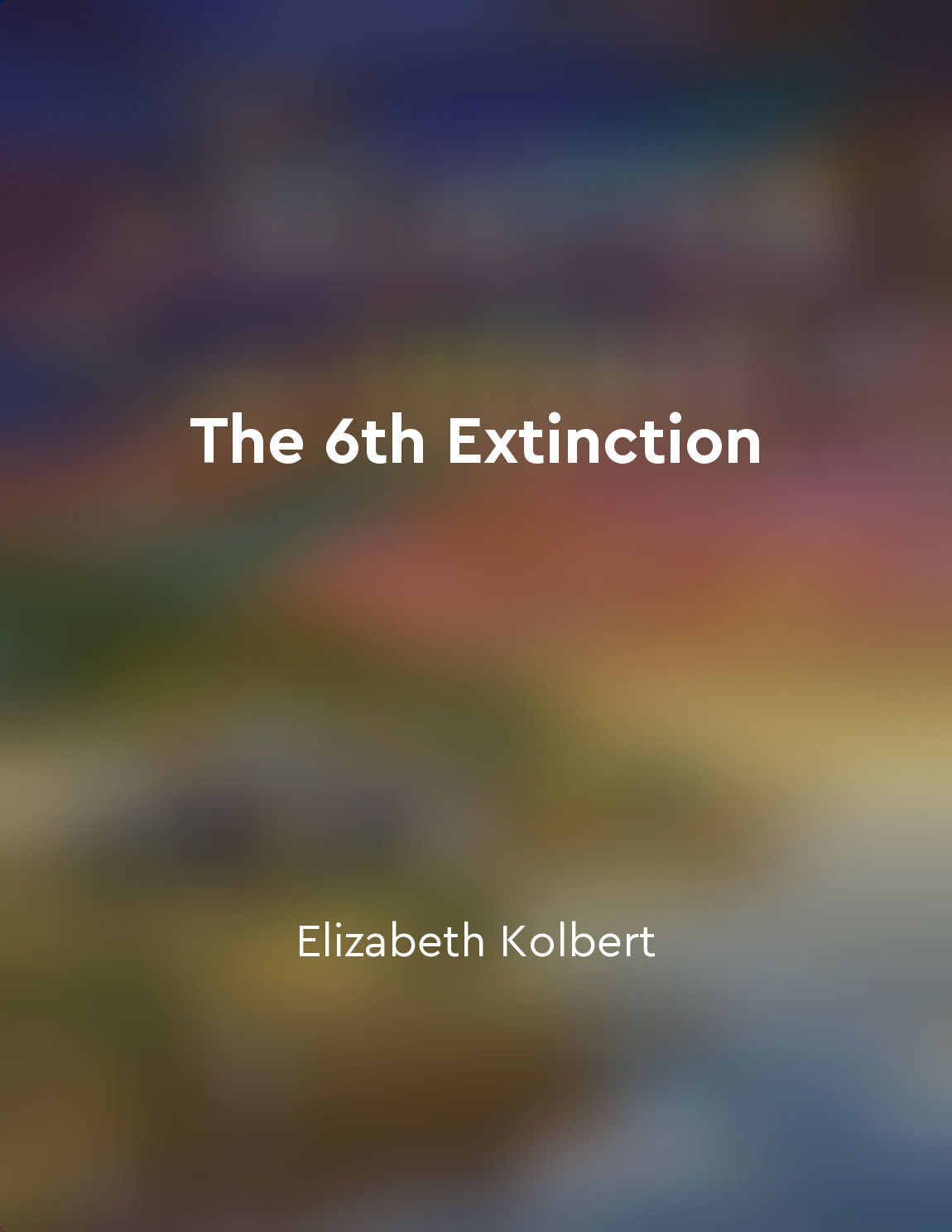Extinction is a natural part of the evolutionary process from "summary" of The Origin of Species by Charles Darwin
Extinction, as a natural process, plays a crucial role in the continuous evolution of species. Throughout the history of life on Earth, numerous species have come into existence, flourished for a time, and then disappeared forever. This cycle of birth, growth, and eventual disappearance is an intrinsic part of the intricate web of life on our planet. The process of extinction is not a random event, but rather a consequence of the dynamic and ever-changing nature of the environment. As conditions change, some species may struggle to adapt and survive, leading to their eventual extinction. This phenomenon is not a sign of failure, but rather a natural outcome of the struggle for existence that characterizes the evolutionary process. Extinction can occur for a variety of reasons, ranging from changes in climate and habitat to competition from other species. In some cases, the arrival of a new predator or the spread of a new disease may spell doom for a particular species. While extinction may seem like a tragic and irreversible event, it is an essential mechanism for driving the continual evolution of life on Earth. From a broader perspective, extinction serves to shape the diversity of life on our planet. Just as the loss of a single thread can alter the fabric of a tapestry, the disappearance of a species can have far-reaching effects on the ecosystem as a whole. By creating space for new forms of life to emerge, extinction plays a vital role in fostering the ongoing process of adaptation and change.- Extinction is not a failure or a mistake, but rather a natural and inevitable part of the evolutionary process. By understanding and accepting the reality of extinction, we can gain a deeper appreciation for the complexity and resilience of life on Earth. As new species arise and old ones fade away, the intricate tapestry of life continues to unfold in all its beauty and diversity.
Similar Posts
Protected Areas
Protected areas are designated spaces that are managed to conserve natural resources and biodiversity. These areas can include ...
Conservation efforts are essential to prevent further extinctions
Conservation efforts play a crucial role in halting the ongoing wave of extinctions that is sweeping the planet. Without interv...
Ecosystems are interconnected in ways we are only beginning to understand
The intricate web of connections that underpins ecosystems is a complex and fascinating phenomenon. From the tiniest microbe to...

Ideologies influence political decisions
Ideologies shape the way we perceive the world, providing us with a set of beliefs and values that inform our political decisio...
Diversity of life on Earth
The astonishing variety of life forms on Earth is a testament to the incredible diversity that exists within our planet. From t...
Humans are the primary cause of the sixth mass extinction
In the annals of life on Earth, there have been five mass extinctions, events that wiped out the majority of species living at ...
Planning
Planning is a crucial element in the conservation and management of natural resources. It involves setting goals, identifying c...

Reproduction of successful variations
When we look at the vast and complex world of living organisms, we see a multitude of variations among individuals within a spe...

Human activity is a major cause of species extinction
In the grand sweep of time, life on Earth has faced numerous challenges and obstacles. From cataclysmic events like asteroid im...


